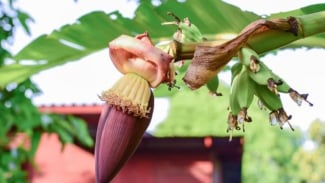Why Watermelon Becomes Symbol of Palestinian Solidarity
- Time
Jakarta – Recently, people use watermelon as the spirit symbol to support the Palestine state. Watermelon is a symbol of resistance. With its colors mirroring the Palestinian flag, the fruit can be seen from the stone walls of Gaza to the galleries of Ramallah, hinting at the political history of a cherished summer fruit.
Over several decades, the Palestinian watermelon has become a public expression of cultural pride in artworks representing the struggle against Israeli apartheid.
Now, a new tradition is emerging online, uniting Palestinians worldwide and drawing influence from those who fought for free expression throughout the late 20th century.
Syifa Hadju ikut turun berdemo aksi bela Palestina
So as to say, this fruit was a part of their culture long before they even became a symbol of resistance.
The use of the watermelon as a Palestinian symbol is not new. It first emerged in 1967, when Israel seized control of the West Bank and Gaza and annexed East Jerusalem.
Following this, the Israeli government used a military order to make public displays of the Palestinian flag a criminal offence in Gaza and the West Bank.
In order to bypass the prohibition, Palestinians started using watermelons since, when sliced open, the fruit displays the patriotic hues of the Palestinian flag – the red watermelon flesh, black seeds, white rind, and green outer skin.
Semangka simbol perlawanan rakyat Palestina
- TIME
Israel lifted the ban on the Palestinian flag in 1993, as part of the Oslo Accords, which entailed mutual recognition by Israel and the Palestinian Liberation Organisation and were the first formal agreements to try to resolve the Israel-Palestine situation.
The flag was accepted as representing the Palestinian Authority, which would administer Gaza and the West Bank.






























